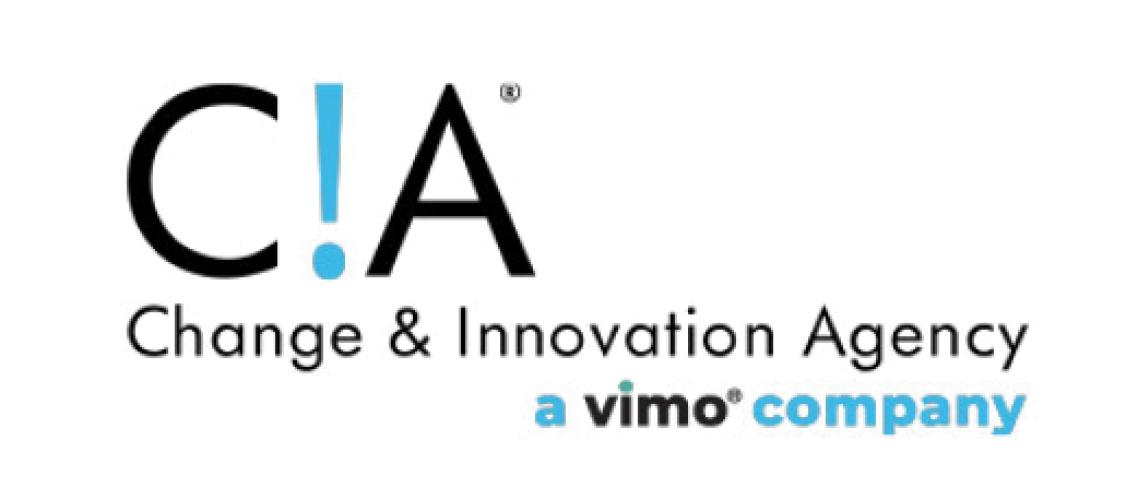
The National Association of State Workforce Agencies (NASWA) publishes its priorities annually on behalf of state workforce agencies. They are developed in collaboration with members through 10 national policy committees, approved by the board of directors, and circulated to membership.
WORKFORCE DEVELOPMENT
Enhance federal Investments
Increase investment in Workforce Innovation and Opportunity Act (WIOA) programs and increase investment for governors’ statewide needs to 20%. Inflation has resulted in a decline of WIOA dollars at a time when we seek to provide American workers with more access to skills training, education, rapid response, and other needed workforce services aligned with in-demand occupations. (Note that states should have an option of reserving a lower percentage for governors’ statewide needs if they so choose.)
Increase permanent funding for the Wagner-Peyser Act to modernize the career services and job coaching infrastructure and provide American businesses more support with hiring and job quality.
- Comprehensive job search assistance is a proven cost-effective service for unemployed jobseekers and is critical to combat unemployment and smooth labor market transitions.
- Crucial needs across all WIOA programs include staffing, the adoption of new service models combining in-person and virtual services, supporting modernization efforts, cyber security, data standardization, and technical assistance.
- Provide adequate funding to incentivize innovative practices and effective hybrid (virtual and in-person) service delivery systems to meet changing customer needs and expectations.
Avoid short-term, episodic, and/or competitive funding opportunities that disrupt planning and hiring, waste critical resources on repeat startup or shutdown activities, and create access barriers for some states, especially small states, with limited grant-writing resources. Instead of intermittent and competitive funding opportunities, such as one-off apprenticeship and career pathways grants, workforce systems would be more effective with increased dedicated funding for core WIOA programs. Reliable funding is vital to build long-term capacity and promote innovation for workforce development at the state and local levels.
Establish new dedicated funding for states to create and scale statewide and regional sector strategies.
Scale up apprenticeships by providing dedicated funding.
- Provide states technical assistance to foster stronger cross-sector partnerships between workforce and apprenticeship entities.
- Enhance the data infrastructure for apprenticeship programs to reduce administrative burdens, better enable state-driven research to inform policy and practice, and ultimately lead to improved performance and outcomes.
Strengthen subsidized employment opportunities, such as on the job training, which have a long history of positive benefits for disadvantaged workers and the broader economy. This is especially true when skills training aligns with in-demand employment opportunities and programming addresses both work disincentives and job displacement concerns.
Support the states’ abilities to promote equal opportunity in workforce programs. Provide training and/or funding for states to deliver nondiscrimination training to state and local equal opportunity officers, organizations, and vendors receiving WIOA grants. Require consistent reporting elements on limited English proficiency between the U.S. Department of Labor’s Civil Rights Center and the Employment and Training Administration.
Continue funding of the Reemployment Services and Eligibility Assessment (RESEA) program at full authorization levels which has a proven track record of accelerating unemployment insurance (UI) beneficiaries’ return to work and the additional benefit of reducing UI payments.
Include funding and allow flexibility across WIOA programs to hire staff and conduct outreach to better engage underserved communities and priority populations in the workforce system’s services and supports.
Provide funding for staff and communications to raise employer awareness about workforce resources and improve connections with the employer community as we build opportunities for workers.
Increase flexibility for states
Promote flexibility by allowing states to use funding across WIOA programs (including the Adult, Dislocated Worker, and Youth programs) to better anticipate future labor market disruptions and help workers not traditionally eligible for assistance and at-risk incumbent workers prepare for labor market success.
Grant states flexibility under WIOA to better serve and expand access for youth, underserved individuals, and workers at high risk of displacement.
- Expand eligibility for the WIOA Dislocated Worker program to include the following: (1) workers in industries and occupations that are at risk of being unemployed due to disruption from technological change, trade, and other economic trends; (2) individuals in nontraditional employment settings (e.g., independent contractors); and (3) justice-involved individuals re-entering the workforce and seeking quality jobs with clear career advancement opportunities.
- Enable states to expand eligibility for the WIOA Youth program to include recent high school graduates, up to the age of 24, who are struggling to secure employment and refugee youth in need of additional support.
- Provide states with flexibility to determine the percentage of WIOA Youth program funds that are allocated to in-school and out-of-school youth based on local labor market needs.
Allow state flexibility for Wagner-Peyser staffing by providing states with discretion to administer the Employment Service (ES) program with state and/or local employees, contractors, other personnel, or a combination that works best for each state.
Maintain and safeguard the vital role of veteran’s programs in the workforce development system. NASWA opposes any efforts to separate veteran’s programs from the U.S. Department of Labor. The state workforce system is best suited to serve veterans, transitioning service members, and military spouses because of its alignment and integration with employment and career services and access to other state and federal workforce programs found in the American Job Centers. This includes serving veterans facing significant barriers to workforce re-entry while avoiding duplication of federal job training, education, and human resource programs.
Rename the Disabled Veteran Outreach Program (DVOP) to more accurately reflect the population of veterans eligible for Jobs for Veterans State Grant (JVSG) services. Remove the reference to “disabled” since program eligibility is not limited to disabled veterans or veterans with a Veterans Affairs (VA) disability rating. This change should also apply to staff currently identified as “Disabled Veteran Outreach Program” (DVOP) specialists. Recommend convening a workgroup comprised of members of the NASWA Veterans’ Affairs committee, the Advisory Committee on Veterans Employment, Training, and Employer Outreach, and USDOL Veterans’ Employment and Training Service leadership to identify a more all-encompassing name for both this program and the staff responsible for serving these eligible veterans.
Expand eligibility, and provide additional funding if needed by a state, to include additional categories of Veterans and eligible spouses for specialized services provided by authorized JVSG personnel:
- All Transitioning Service Members regardless of Career Readiness Standard (CRS) assessment by installation commanders.
- Gold Star spouses. This group should also be considered “eligible spouses” for the provision of Priority of Service for all USDOL funded employment and training programs.
- Persons approved for the Sergeant First Class Heath Robinson Honoring our Promise to Address Comprehensive Toxics Act of 2022 (the PACT Act) benefits.
- Spouses of active-duty personnel.
- Spouses of service-connected disabled Veterans regardless of rating.
- Veterans aged 55 and above.
- Veterans facing financial hardship as a result of a federal or state declared natural disaster or emergency.
- Veterans with non-service-connected disabilities.
- Veterans who are single parents with employment issues related to lack of affordable childcare, housing and transportation.
Align workforce with post-secondary, infrastructure, and industrial investments
New federal infrastructure and industrial investments that build transportation networks, expand America’s energy, semiconductor, and electric vehicle production capacity, enhance certain workforce sectors, or expand the reach of broadband and workforce system career, training, and supportive services should align to give jobseekers an opportunity to acquire skills and access high-quality jobs.
Facilitate greater coordination and alignment across federal agencies in the creation, implementation, and awarding of workforce development investments and programs. Currently, federal agencies have varying applications, uncoordinated funding opportunities, and at times do not include state workforce agencies as core partners in the workforce aspects of federal investments.
Require partnerships with state workforce agencies to support more informed planning and successful outcomes for federal investments through mechanisms like encouraging letters of support from state workforce agencies in competitive funding opportunities and prioritizing applicants that partner with state workforce agencies and the public workforce system.
Fund state workforce agencies and other workforce system partners in supporting the implementation of federal infrastructure and industrial investments. The scale of these federal investments through the passage of legislation like the Creating Helpful Incentives to Produce Semiconductors and Science (CHIPS) Act, the Inflation Reduction Act, and the Infrastructure Investment and Jobs Act will generate significant workforce development needs. Federal agencies shall be aligned and work together to support state workforce agencies with resources, technical assistance, and guidance to meet these needs.
Promote economic mobility by reducing systemic barriers to successful outcomes
These reforms will ensure states and their local partners can more successfully support economic mobility for a broad range of Americans, including recently unemployed jobseekers, historically marginalized communities, people with disabilities, Temporary Assistance for Needy Families (TANF) and Supplemental Nutrition Assistance Program (SNAP) recipients, youth transitioning out of foster care, veterans, formerly incarcerated individuals, those who have been out of the labor market, and individuals in need of career readiness skills.
Provide funding to increase access to childcare and other supportive services on an ongoing basis to broaden labor market participation.
Expand broadband coverage to support digital equity and increased access to employment and training opportunities.
Improve alignment of workforce, unemployment insurance, human services, housing, and education agencies at the federal level, including performance metrics, reporting requirements, data definitions, state plans, policies, as well as data sharing and evidence-building efforts that drive more successful outcomes.
- Advance policy reforms that make it easier to blend funding streams across systems and programs to better serve customers.
- Advance alignment of WIOA, and TANF, and SNAP—especially around allowable activities and performance reporting—to better place customers into quality jobs with clear career advancement opportunities.
- Advance greater alignment and coordination between the WIOA Title I Adult, Dislocated Worker, and Youth programs; the WIOA Title II Adult Education and Family Literacy program; the WIOA Title III Wagner-Peyser Employment Service program; and the WIOA Title IV Vocational Rehabilitation program.
Invest in innovative, iterative, and continuous digital transformation efforts and supporting data technologies for holistic, interoperable service delivery that will encourage program partners to work collaboratively to improve customer access, security, and customer experience.
DATA INFRASTUCTURE
Support effective workforce investment with reliable data
Investing in state-driven data infrastructure is key to understanding and addressing local labor market issues, monitoring progress toward reducing geographic and racial disparities in labor market outcomes, and increasing the effectiveness of education, workforce (including apprenticeship), human services, and economic development investments.
Double funding and expand flexibility to state LMI divisions for their required deliverables under the federal-state cooperative programs to enable them to meet requirements for high-quality labor market statistics without having to divert state funds from other priority data products and projects. This follows recommendations of the Workforce Information Advisory Council.
Double funding and expand flexibility to state LMI and research divisions so they can translate LMI into locally actionable intelligence. All jobs exist in local labor markets, and effective national investment requires detailed local information for success. This follows recommendations of the Workforce Information Advisory Council.
Invest $7 million annually in multi-state data collaboratives that streamline state access to and use of linked administrative data across departments and state boundaries to inform local policy and practice. This funding would enable the majority of states to host and leverage de-identified data and support the longer-term emergence of a national data network that will improve lives through better investments. This is critical because artificial intelligence will change the labor market at a rapid speed.
Involve the U.S. Department of Labor in new workforce development investments to ensure data-informed practices. Substantial workforce investments are being made in national infrastructure programs through agencies such as the Departments of Transportation, Energy, and Commerce, as well as the National Science Foundation. These rely on workforce information and seek to promote workforce development, but do not set aside funding to produce labor market and workforce information essential to success.
UNEMPLOYMENT INSURANCE
Enable states to prepare for the next recession
Increase administrative funding as a whole to meet employer and claimant expectations for acceptable customer service and be ready for the next recession, and to avoid the underfunding that occurred prior to the pandemic. Since 2009, funding levels have never met need as demonstrated by budget documents submitted through the Resource Justification Model.
- Invest in and provide for ongoing maintenance and support, based on state need, for the digital transformation of UI systems that are flexible, scalable, and resilient, including funding and support for staffing, digital equity, customer experience, and emerging technologies.
- Invest in the security for systems and data, including fraud prevention and detection and identity verification and validation.
- Information technology and anti-fraud funding should be both recurring and distinct and separate from general UI administrative funding, should be adequate, and should not reduce overall administrative funding.
- Provide additional flexibility and extend deadlines for use of UI above-base funds, especially the time frame to use fourth-quarter funds.
- Encourage further investments in UI program integrity by permitting states to use up to 5% of recovered claimant overpayments and additional employer contributions collected to be used solely for UI program improvements.
- Exempt the UI program from sequestration requirements of the Balanced Control Act of 2011. Reductions to administrative funding, the Trade Adjustment Assistance program, and the Extended Benefits program jeopardize services to citizens in need.
- Provide flexibility for states with solvent trust funds allowing the funding to be used for additional UI-related administrative funding.
- Give states flexibility over CARES Act administrative funding by extending their authority and expanding permitted uses of the funding.
- Allow states to utilize CARES Act administrative funding for other UI purposes and/or authorize the U.S. Department of Labor to redistribute funds to other states in need, in the event where states are unable to use their CARES Act administrative funding.
- Provide additional specific funding for states to utilize to respond to USDOL audits, including the Office of the Inspector General audits.
Permit states to limit retroactive notifications to citizens involved with the CARES Act UI programs when states acted in good faith implementing shifting federal requirements. The U.S. Department of Labor is still requiring states to request documentation from citizens in cases where any resulting overpayment would be waived anyway, causing alarm for citizens and preventing states from focusing on preparing for the next recession and improving programs.
Update and streamline the Extended Benefits and Disaster Unemployment Assistance programs to be more responsive to claimant needs, easier for states to administer, and reduce improper payments during the next recession or emergency.
Expand Short-Term Compensation (Workshare) coverage to include new hires as an economic recovery program when businesses ramp up after a recession or shutdown. Consider additional flexibilities to encourage program use.
Reauthorize the Trade Adjustment Assistance for Workers program to assist workers who lose their jobs because of foreign trade.
Include flexibility as a part of reauthorization of the Trade Adjustment Assistance for Workers program so that states have discretion to utilize funds for other dislocated workers and for incumbent and/or new worker training and upskilling to prevent additional offshoring.
Increase flexibility for states
Authorize state staffing flexibility through 2024 as states are addressing administrative challenges, backlogs, and overpayments.
Hold states harmless for any overpayments made under the federal Lost Wages Assistance (LWA) program as long as states make good faith efforts to recoup improper payments.
Waive all non-fraudulent pandemic-related unemployment compensation overpayments. This includes Pandemic Unemployment Assistance (PUA), Pandemic Emergency Unemployment Compensation (PEUC), Mixed Earners Unemployment Compensation, and Federal Pandemic Unemployment Compensation (FPUC) overpayments resulting from benefits obtained through no fault of the claimant in order to prevent further economic hardship.
Amend the Payment Integrity Information Act to clarify that state UI payments are not federal payments subject to the act.
Clarify that Internal Revenue Service federal tax information, such as a payment amount that does not identify the source of the payment or recovery, may be used in state UI systems to implement the mandatory federal tax offset program and is not a violation of 26 U.S.C. 6103.
Extend the statute of limitations for filing criminal charges and civil enforcement related to UI from 5 to 10 years.
Waive interest payments and the accrual of interest on federal advances to states to pay UI benefits retroactively from the beginning of the pandemic recession through 2024.
TECHNOLOGY
Support shared services and technologies that state agencies can leverage to address issues common across federal programs.
Ensure competitive grants have adequate funds set aside for technology innovation and data needs to support new programs and initiatives.
Invest funding to support data and technologies for holistic, interoperable service delivery and to encourage program partners to work collaboratively to implement effective and creative technology-based workforce solutions for system customers.
Provide innovation funding for states to develop and explore emerging technology solutions to improve service delivery and optimize customer experience.

































